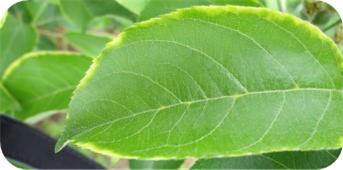May 19, 2015
by Terence Bradshaw
Most orchards in the ‘traditional’ growing regions in Vermont are at or near petal fall, although the cool weather may be extending bloom a bit. This is a critical time for orchard management, so be ready.
Apple scab: Ascospore maturity is high and with few wetting periods lately many mature spores that have not yet been released are ready to cause infection. Rain overnight and more expected today will likely provide conditions for infection. Fungicides applied as late as last Thursday will likely have protected your orchard during this infection period, but we are in a period of rapid shoot and leaf expansion so newly emerged tissue may not be covered. Wind conditions do not appear favorable for spray applications until Wednesday evening or Thursday morning, so a material with ‘kick-back’ activity such as strobilurins (Sovran, Flint, etc.), DMIs (Rally, Inspire Super, Procure), or the newer SDHIs (Luna Sensation/Tranquility, Merivon, Fontelis) is suggested. Each of these materials also has at least some activity against cedar apple rust and powdery mildew. As always, kick-back materials should be combined with a protectant fungicide to reduce risk of developing resistance. I do not recommend combining Captan with Fontelis due to incompatibility issues. This may be an appropriate time for a final EBDC/mancozeb application if you have been using the lower three pound/acre rate, since an application made on Thursday will allow for harvest on August 7, given the 77-day preharvest interval. Organic growers would apply micronized sulfur, or consider using liquid lime sulfur (2% solution) which will provide some thinning action if combined with a low rate of oil (0.5%).
Insects: Plum curculio, European apple sawfly, and the earliest flying codling moth are active. If you have significant bloom or bees flying in the orchard, you should not apply an insecticide in your orchard. This is always a tough spray to time. particularly in orchards with many varieties or extended bloom. There are many options for insecticide materials at petal fall, please consult the table in Chapter 7 of the New England Tree Fruit Management Guide to make your selection. One material of note to consider is the old standby carbaryl which may be applied for thinning purposes (see below), but a low thinning rate of 1 pt/acre may not be sufficient as an insecticide, so another material may be combined to provide better efficacy. Organic growers should have started applying Surround and may consider adding an azadiractin material to improve efficacy, especially against European apple sawfly.
Thinning: Virtually all orchards had heavy bloom and good pollination weather. This is the year to break the biennial bearing cycle that many orchards have gotten into in the last few years. This means thinning early and often, Starting at petal fall. Each orchard is different, so it is very difficult to make blanket thinning recommendations that apply to everyone, so please consult the thinning section in Chapter 11 of the New England Tree Fruit Management Guide. Complicating thinning decisions are weather conditions recently and in the next several days. The NEWA Apple Carbohydrate Thinning Model may be of use in planing your strategy. Cooler, cloudy weather in the next few days will reduce thinner activity, so higher rates of materials may be in order in your orchard.
Where petals are off and no bee activity is present in the orchard. an application of carbaryl plus NAA is warranted, please check the Guide for appropriate rates. 6-BA thinners (Maxcel, Exilis) are not particularly effective in cooler weather, and may be saved for the 10-12 mm fruit size window next week. If you still have blooms or bee activity in the orchard, a higher rate (5-10 ppm) of NAA may be used without the addition of carbaryl, with carbaryl included in the 10-12 mm spray. It is important to check thinner effectiveness before making the next spray. Fruitlets that are thinning will not close their sepals and will develop yellow stems before abscission. Also, fruitlets stop growing before visual thinning indicators appear, so measuring a sample of fruitlets daily in the 3-5 days following application will indicate whether or not fruit are likely to drop. This measurement should be made on the same fruitlets for each measurement. Dr. Philip Schwallier from Michigan State University Extension has a good outline of thinning activities that would be appropriate to consider in this season which has the potential fore orchards to overset fruit: http://apples.msu.edu/uploads/files/Schwallier_Thinning_EXPO_2013.pdf.
Good luck, Terry

